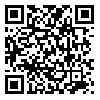Volume 65, Issue 13 (Vol 65, Supplement 1 2008)
Tehran Univ Med J 2008, 65(13): 25-32 |
Back to browse issues page
Download citation:
BibTeX | RIS | EndNote | Medlars | ProCite | Reference Manager | RefWorks
Send citation to:



BibTeX | RIS | EndNote | Medlars | ProCite | Reference Manager | RefWorks
Send citation to:
Saraji G.N, Ebrahimy L, Fouladi B. A survey on ergonomic stress factors of musculoskeletal system in Iranian carpet restoration workers. Tehran Univ Med J 2008; 65 (13) :25-32
URL: http://tumj.tums.ac.ir/article-1-672-en.html
URL: http://tumj.tums.ac.ir/article-1-672-en.html
A survey on ergonomic stress factors of musculoskeletal system in Iranian carpet restoration workers
Abstract: (6429 Views)
Background: Musculoskeletal disorders (MSDs) are one of the major problems,
encountering work force today. Many researches have revealed the disadvantages and
inconveniences that such problems have caused. Some kinds of careers are traditional and
complex and are more probable to cause disorders. Carpet restoration is one of these jobs
causing musculoskeletal disorders in the work force. The nature of this job puts a lot of
pressure on the worker’s body. The postures are most of the time problematic and are in
need of some ergonomic actions to be taken in order to prevent from diseases and
disorders of musculoskeletal system.
Methods: In a cross- sectional survey, 144 male carpet restoration workers enrolled. NORDIC and PLIBEL checklists were used to assess the musculoskeletal stress factors with injury effects. Another checklist was employed to address demographic characteristics of the population under study.
Results: The results showed that 82% of these workers suffered from some forms of musculoskeletal disorders mostly from knee and lower back discomfort. The more they had job experience, the more they suffered from MSDs. Disorders of neck and upper back had significant relationship with the duration of work experience. Also badly designed tools and awkward posture were of main risk factors. PLIBEL checklist successfully showed the main threatening risk factors of all body parts.
Conclusion: The survey revealed that the incidence of MSDs in these workers is high and there are several risk factors affecting their body during work unsuitable design of tools, incorrect work height and bending position of the body during work were the most risk factors, which observed.
Methods: In a cross- sectional survey, 144 male carpet restoration workers enrolled. NORDIC and PLIBEL checklists were used to assess the musculoskeletal stress factors with injury effects. Another checklist was employed to address demographic characteristics of the population under study.
Results: The results showed that 82% of these workers suffered from some forms of musculoskeletal disorders mostly from knee and lower back discomfort. The more they had job experience, the more they suffered from MSDs. Disorders of neck and upper back had significant relationship with the duration of work experience. Also badly designed tools and awkward posture were of main risk factors. PLIBEL checklist successfully showed the main threatening risk factors of all body parts.
Conclusion: The survey revealed that the incidence of MSDs in these workers is high and there are several risk factors affecting their body during work unsuitable design of tools, incorrect work height and bending position of the body during work were the most risk factors, which observed.
| Rights and permissions | |
 |
This work is licensed under a Creative Commons Attribution-NonCommercial 4.0 International License. |





